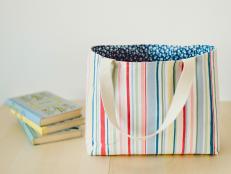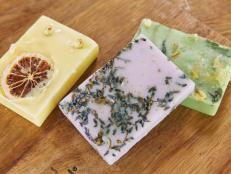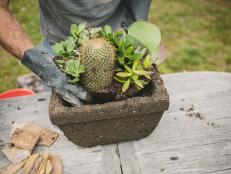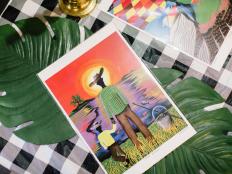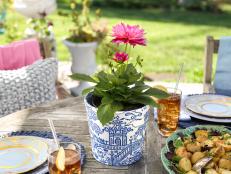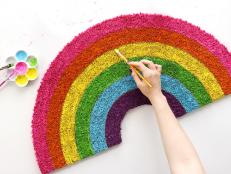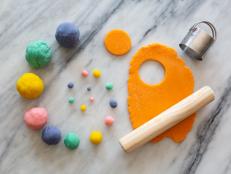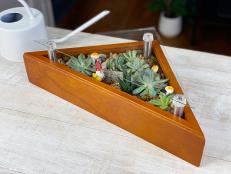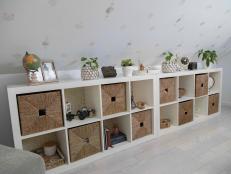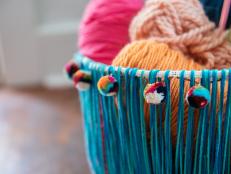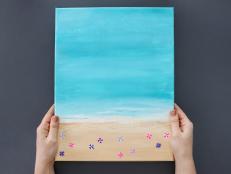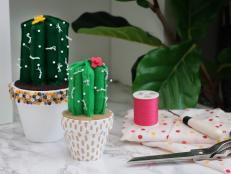How to Knit a Handspun Yarn Journal

Materials and Tools (Yarn):
wool roving
large pot filled with water
Lanaset/Sabraset acid dyes (prochemicalanddye.com)
plastic wrap
newspaper or other scrap paper
plastic hair-dye bottles
spray bottle filled with white vinegar
stockpot with lid
metal colander
dishwasher
spinning wheel (or a drop spindle)
Steps:
- Place roving in a large pot filled with water. Gently force it under the water, and soak until it absorbs as much water as it can. Do not swish it around too much, or you'll felt it.
- Spread lots of newspapers or scrap paper over your workspace.
- Form a layer of plastic wrap over the newspaper, overlapping the edges as you go. (More overlap = less leaking in the dye pot, so be generous.)
- Prepare the dye mixtures in the bottle. Mix the dye with a small amount of water until it "looks" strong enough. Err on the side of caution; you can always add more dye powder.
- Hold the roving over the sink, draining excess water. Arrange the wool roving flat on top of the plastic, exposing as much surface area as you can.
- Squirt dye on the damp roving. Start with the lightest color first and progress to the darkest. Less is more. More than four or five colors can be too much, unless they are in the same color family or you want a very rainbow-like roving. Remember that each spot will be much larger when stretched out in the final yarn, so don't worry if some spots of color look too small.
- When you like the way the dye looks, squirt vinegar onto the entire roving. The acid in the vinegar helps the dye "strike," or grab, onto the fiber. Don't worry about getting too much vinegar on the wool. It's better to have more than not enough.
- Cover the roving with another layer of plastic wrap. Roll it up like a sausage and try to keep separate sections from touching each other. Wrap the entire thing tightly with another layer of plastic wrap.
- Place the colander in the bottom of the metal pot and put the fiber "sausage" in it. Cover with the lid.
- Put the pot and contents into your dishwasher and run through the longest, hottest cycle possible. Depending on your dishwasher, you may need to place it on a cookie sheet to keep it upright. You might also want to do two cycles, depending on how hot your dishwasher gets. Leave the pot inside until it cools down. If you do not have a dishwasher, you can carefully steam the packet on a stovetop, but be sure the plastic packet does not touch the bottom or boiling water.
- This is the messy part, best done outdoors or in a laundry sink. Unwrap the packet and pour off the extra dye (some will run off and gather in the package and the pot). Fill the pot with clean water and then wash the fiber. Some dye should come off, but not very much. Be careful not to felt the fiber.
- Hang the fiber until completely dry.
- Once it has dried, spin as desired.
Materials and Tools (Journal):
yarn (from above)
appropriately-sized knitting needles
half yard fabric of denim or corduroy
felted sweater (Add 1/2 yard of fabric to the above if you skip the sweater)
sharp scissors or rotary cutter
thin plastic 3-ring binder
hot glue gun
needle and thread
black marker or pencil
ruler
Steps:
- Mark the "window" cutouts on the plastic 3-ring binder with a black marker or pencil. This is where you will display your hand-dyed fabric. Don't make the windows too big.
- Cut out the windows with sharp scissors or a rotary cutter (you can also use a razor blade/knife). Depending on their shape, use the ruler as a guide.
- Cut apart your felted sweater, removing the arms first. Open up one side seam. Make the largest piece of felted fabric possible.
- Using the 3-ring binder as a template, cut out one single piece from the felted sweater to use as the cover. Leave a little extra around the edges, such as 3/4 inch.
- Use hot glue to attach the sweater to the outer edges of the binder. Make sure the binder is closed when you do, or it will not close properly.
- Cut out the windows in the felt from inside the binder using a rotary cutter.
- Knit panels of your hand-dyed yarn large enough to stretch just beyond the edges of your "windows" from behind. Attach them from the inside with hot glue.
- Cut two panels of fabric for the inner "flyleaf," and either hot glue them down, or stitch them along the outer rim of the notebook. Stitching looks better, and if you use a tapestry needle, you can use more of your hand-dyed yarn.
- Fill the notebook with things like patterns, photos, yarn labels and yarn samples.
Shannon Okey, Cleveland, Ohio
Website: knitgrrl.com










